Part of a series of articles titled Cultural Landscapes of Sleeping Bear Dunes National Lakeshore.
Article
Boekelodge Log Cabin Cultural Landscape District
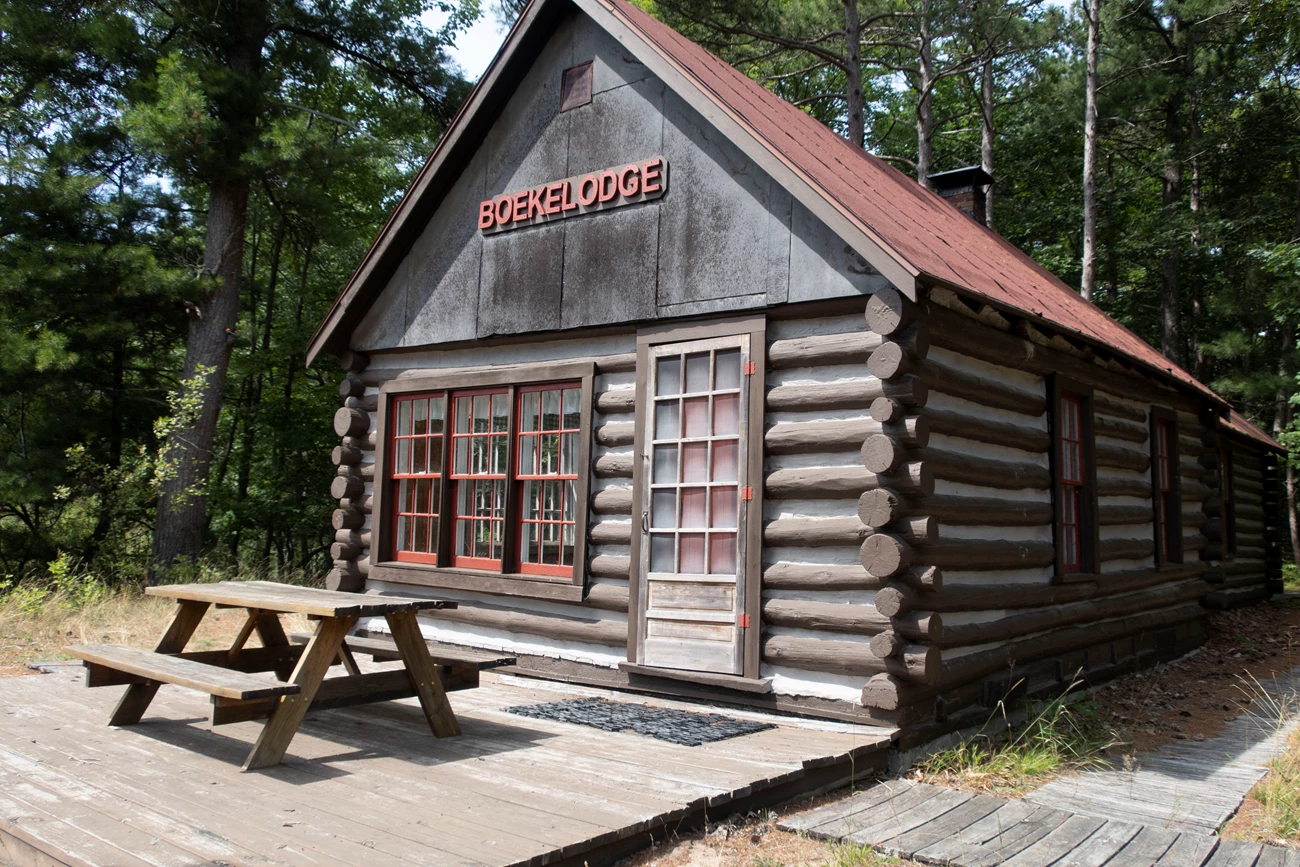
Edwards / NPS, 2019
Introduction
Boekelodge Log Cabin was originally built as a homestead cabin in 1932 by homesteaders who hunted, trapped, fished, and tended a garden on the land from 1929 to 1935. Miles Boekeloo purchased the land and cabin in 1945 and undertook improvements. In 1970, Sleeping Bear Dunes National Lakeshore was established and inquiries about NPS purchasing the land began in the mid-1970s. The Boekeloo family continued to use it as a wilderness retreat until a Reservation of Use and Occupancy agreement with the National Park Service expired in 2002.The period of significance for Boekelodge is 1929 to 2005 corresponding to the original cabin construction and use of the land as a homestead, purchase and use by the Boekeloo family, and the purchase by the NPS and expiration of the agreement. The cultural landscape is 365.48 acres containing beach, dunes, woodland, trails, buildings, and small-scale features. It was one of the last existing wilderness retreats, which were popular in the mid-20th century, in the state of Michigan.
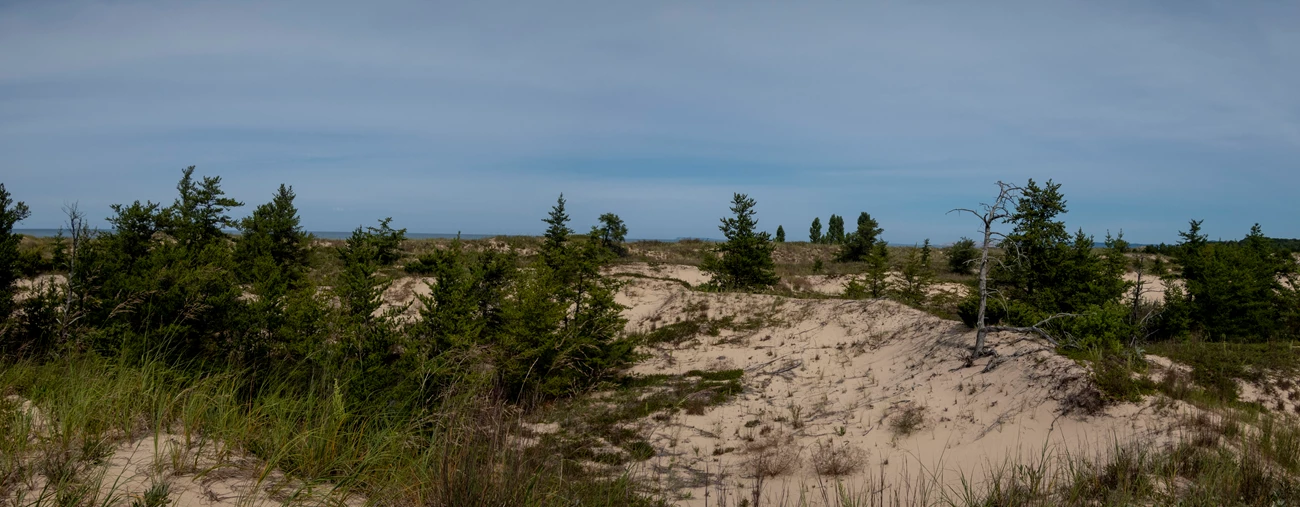
Edwards / NPS, 2019
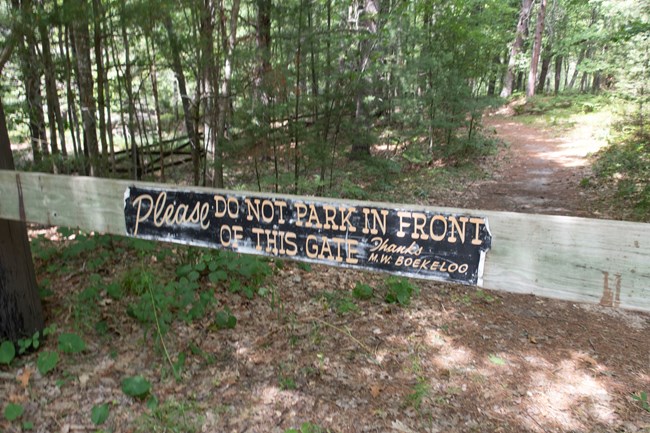
Edwards / NPS, 2019
Landscape Description
Boekelodge, in Benzie County, Michigan, is owned, managed, and maintained by Sleeping Bear Dunes National Lakeshore. Approximately 15 minutes south of Empire, Michigan, along HWY 22, Boekeloo Road leads west-northwest to a dead end with a gate and entry path to the cabin. The Boekelodge cultural landscape is a unique primitive vacation site on the northeastern shore of Lake Michigan. The Boekelodge Cabin is 716 sq. ft., including an addition on the back built by Miles Boekeloo. The front gable has red painted letters reading BOEKELODGE. The only other building in the cultural landscape is the privy northwest of the cabin.
The cabin faces a pond hand dug by Miles Boekeloo and hired help. The pond enhances the primitive feeling of the cultural landscape and creates a view from the front of the cabin looking east. A trail leading from the cabin goes through woodlands, wetlands, and dunes arriving at Boekeloo Beach on the northeast lakeshore of Lake Michigan. These natural systems were significant to the use and feeling the Boekeloo family had during the period of significance.
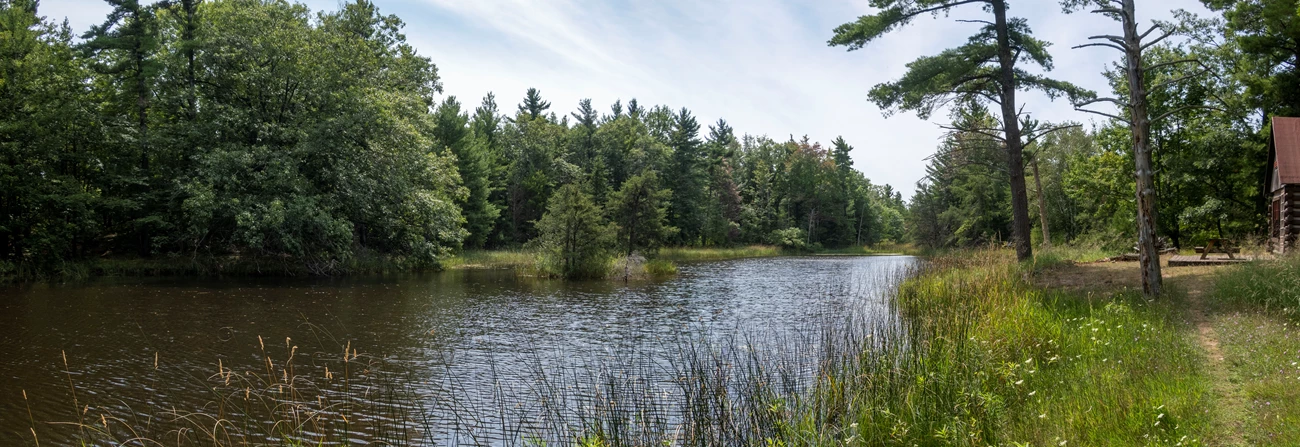
Edward / NPS, 2019
Historic Use
Joseph Cooper purchased the 161- acre property in 1929 to be used as his family’s homestead. He improved the site by building the original one-room footprint of the cabin, outbuildings, and hand dug drainage canals. The canals were for plans to create a cranberry bog. However, the plans were never recognized. Cooper moved off the land in the mid-1930s and it sat uninhibited for approximately 10 years.
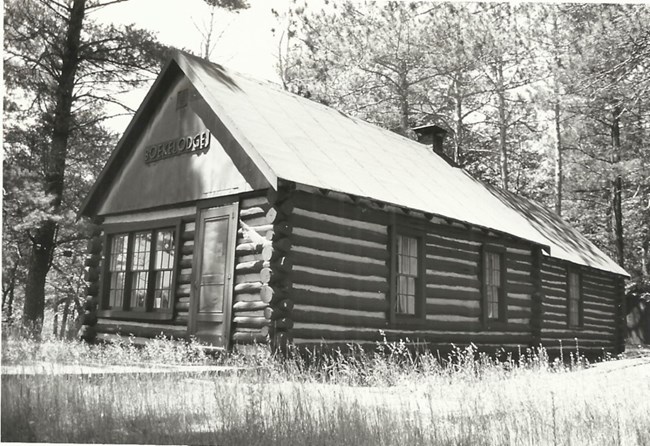
NPS
During the mid-20th century, the almost untouched, natural landscape was threatened by development propositions on the Lake Michigan shore. These propositions threatened the Boekeloo land from the south and west. The Boekeloo family enjoyed their use of the property because of its natural setting and they strived to maintain the setting throughout their ownership. This threat of development led Miles Boekeloo to purchase an additional 204.48 acres in 1962. This purchase was significant because it included about 1.25 miles of lakefront beach. Miles had a few trees cut to create a trail from the beach to the cabin.
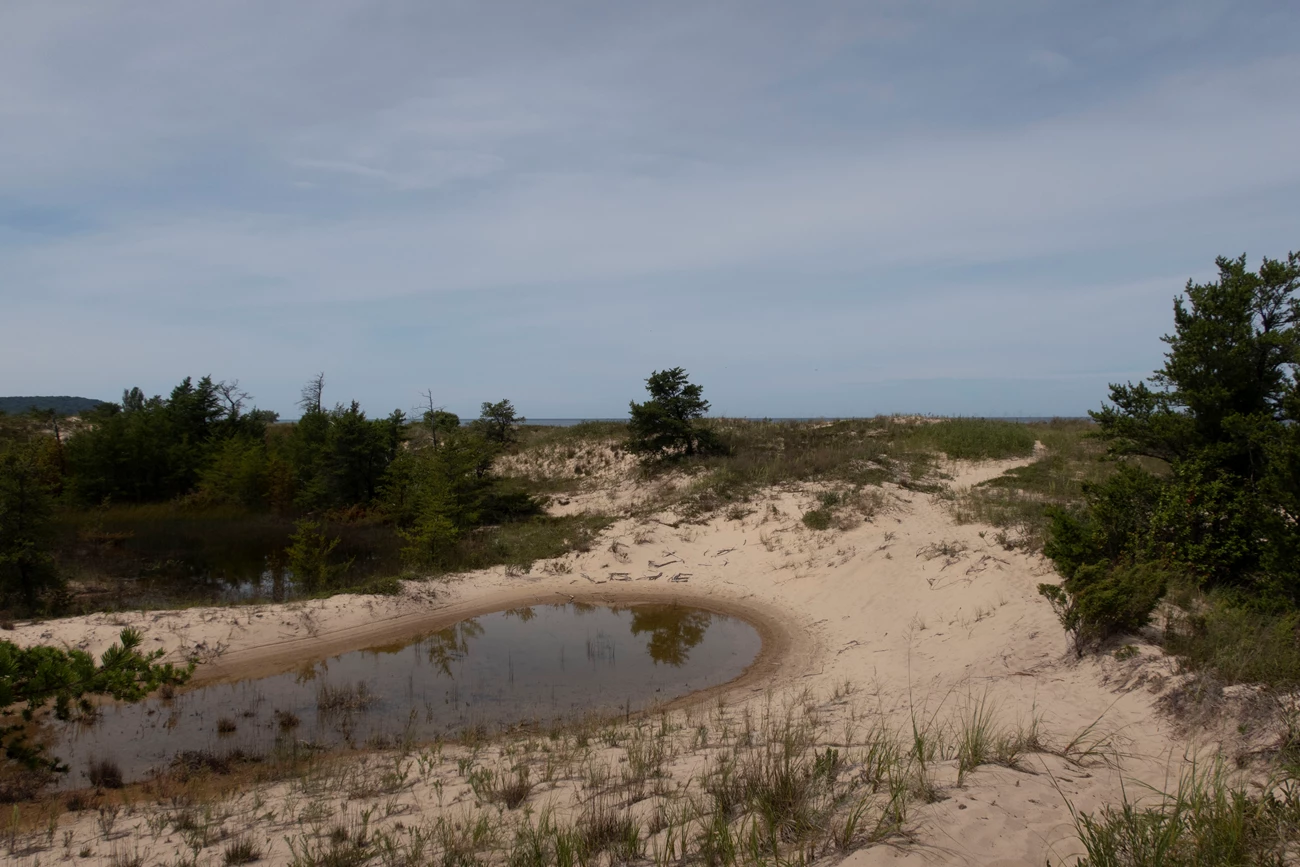
Edwards / NPS, 2019
Quick Facts
- Cultural Landscape Type: Historic Vernacular Landscape
- National Register Level of Significance: State
- National Register Eligibility for Significance:
Criteria C as a good example in the State of Michigan as one of its historic construction, workmanship, and material of a rustic cabin in an undeveloped landscape.
- Period of Significance: 1929 - 2005
Landscape Links
Last updated: April 1, 2021
